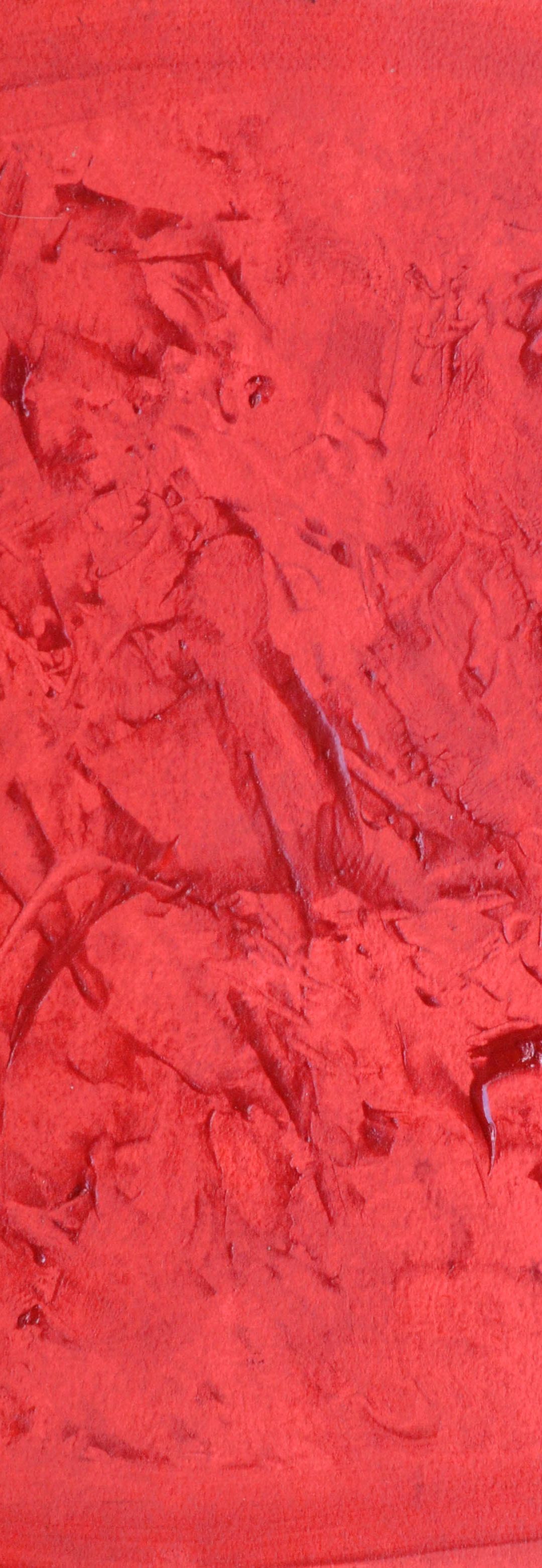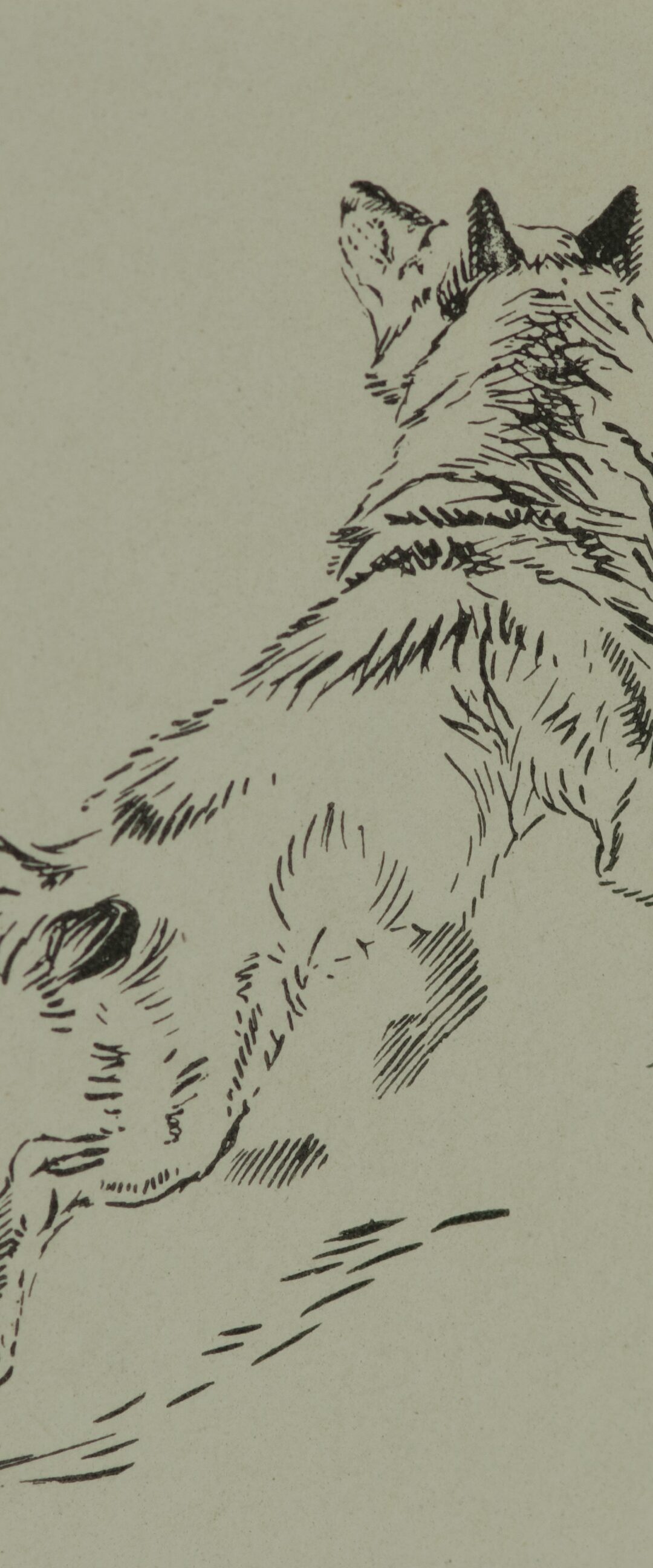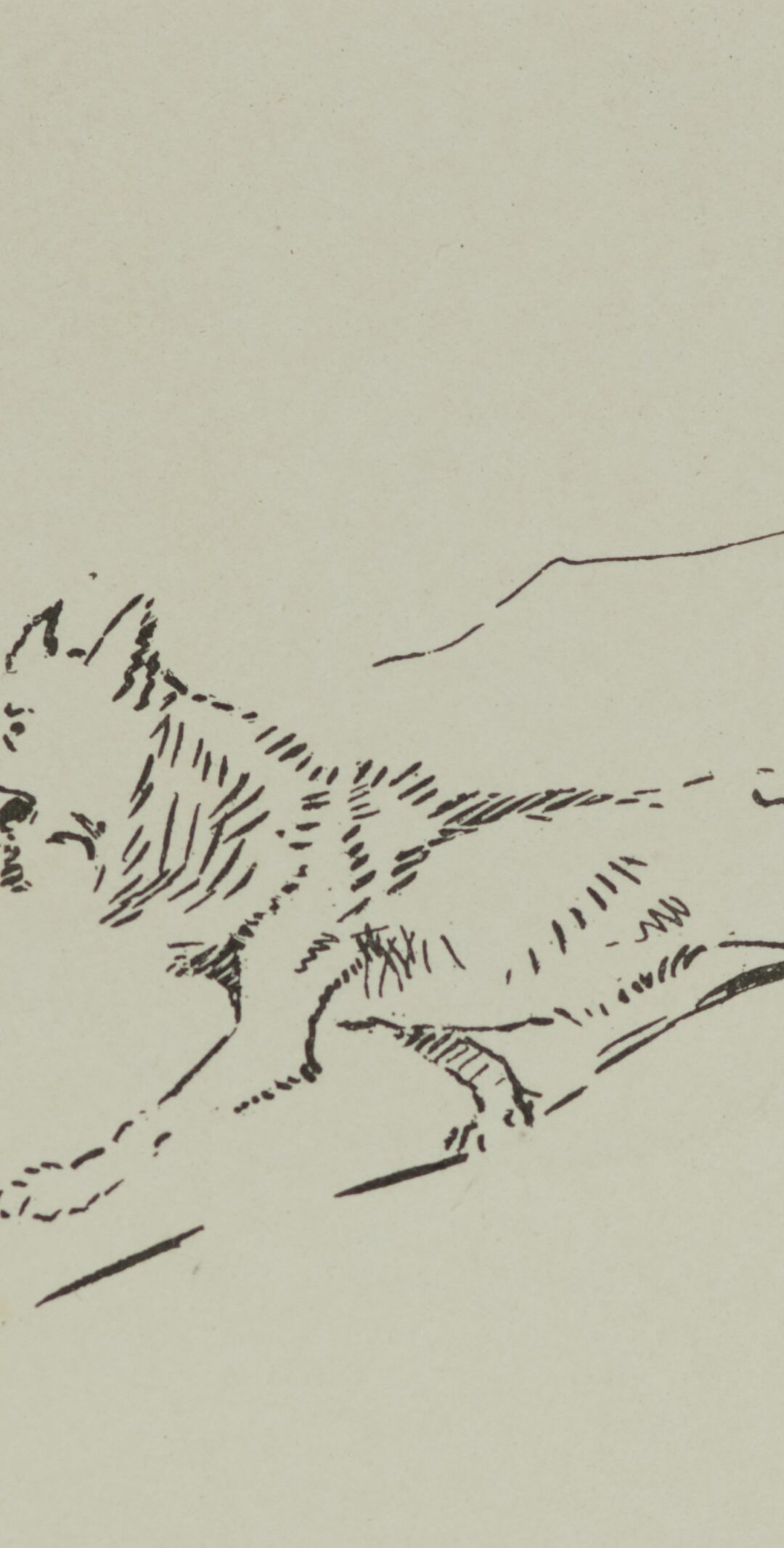
by David L. Witt | Feb 26, 2020 | Gallery, More Beautiful and Amazing
Marsha Skinner, Fire Drawing (series of three),Oil on archival paper/2019 “More Beautiful and Amazing” Seton Gallery exhibition 2019-2020 I’ve never lit a campfire in the wilderness, disliking as I do, the inevitable mess this leaves behind. Fire rings in developed...
by David L. Witt | Mar 15, 2019 | Curator's Notes
Intertwined: The Mexican Wolf, the People and the Land Transformation of a Wolf Killer into a Wolf Protector: Wolves, Conservation and Ernest Thompson Seton by David L. Witt Saturday, March 23, 1 p.m. In January 1894 a little-known Canadian bounty hunter came to the...

by David L. Witt | Sep 14, 2018 | Lobo, Wolves & Wildlife Conservation
Wolf Sketch by Ernest Thompson Seton Untangling the Past When Seton arrived in New Mexico in 1893, decades of hunting had decimated the previously abundant wildlife. Wolves had hunted animals from bison to pronghorn antelope. But by then predators preyed upon cattle,...
by David L. Witt | Sep 5, 2018 | Curator's Notes
The passage of time brings change to the details of life. But overarching themes may change very little. One-hundred and twenty-four years ago Ernest Thompson Seton attended the last hours in the life of a wolf. Referred to in his journal as specimen #677, the wolf...

by David L. Witt | Aug 17, 2018 | Lobo, Wolves & Wildlife Conservation
Undated Seton Wolf Sketch Part I Seton had planned to spend the winter of 1893-1894 at his home in Toronto, and with luck, in New York as well. His professional future as an illustrator (and later, as a writer) resided in the American city. His manic work schedule,...




